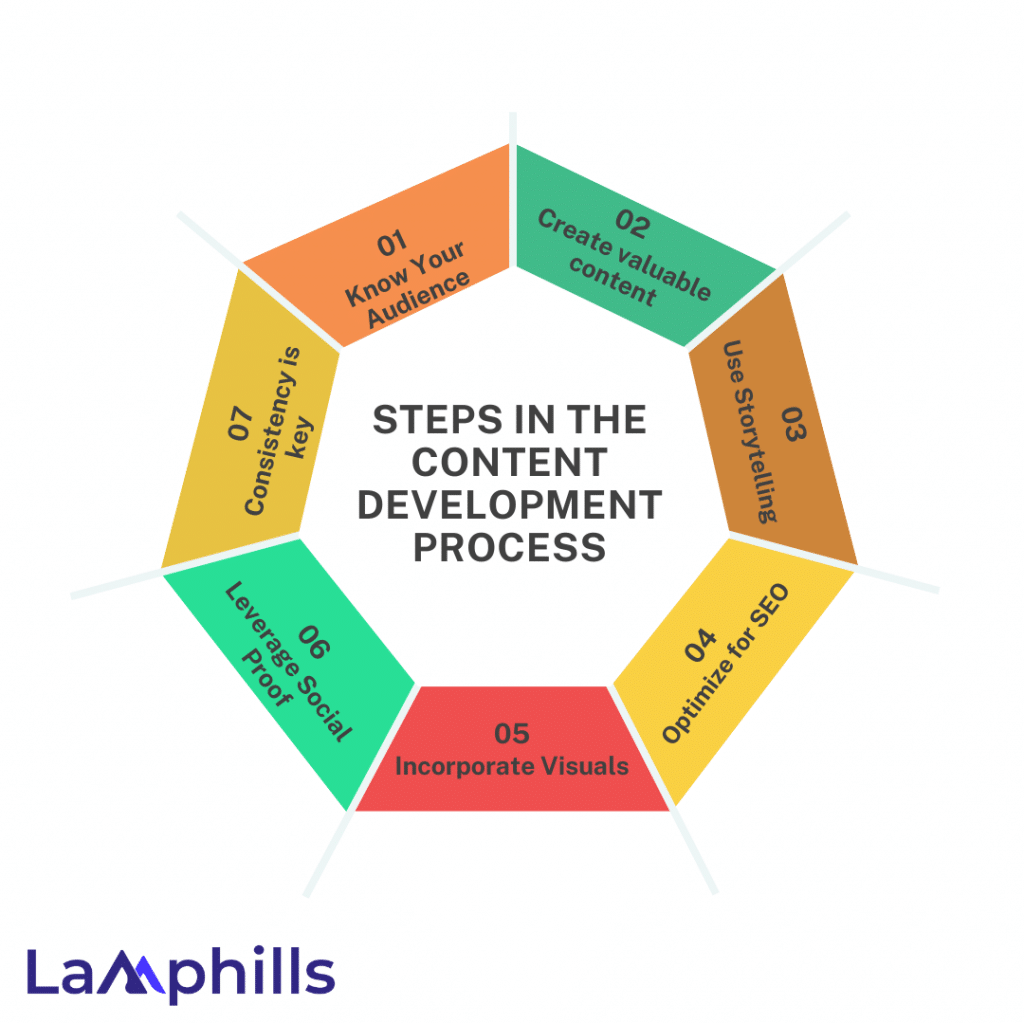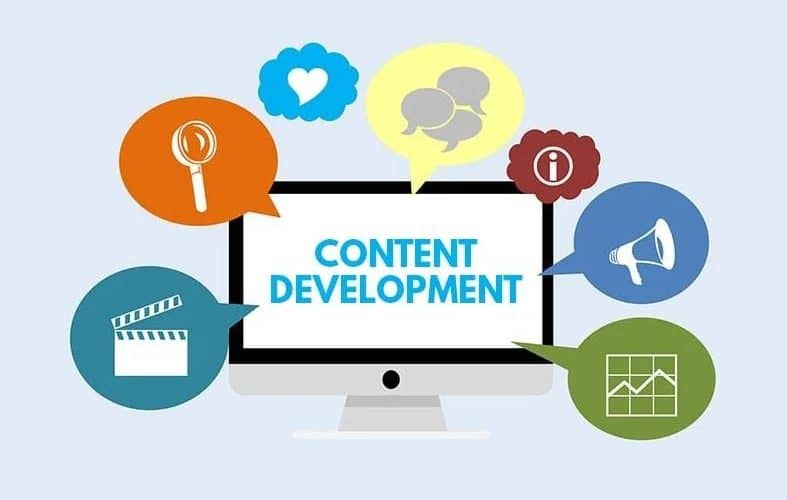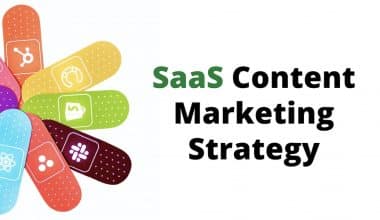When I initially got into digital marketing, the term “content development” was both intriguing and intimidating. Like many others, I wanted to write content that not only drew readers in but also engaged them deeply. After endless hours of research, trial, and learning from my failures, I realized that content development is both an art and a science. Here, I’ll share some of the best techniques I’ve discovered for generating content that increases engagement.
What is Content Development?
Content development is the process of creating, planning, generating, and distributing content to achieve business objectives. This word is synonymous with content marketing and refers to the complete content lifecycle, from conceptualization to influence on readers (also known as potential consumers).
Before getting into the best practices, it’s critical to understand why content development is so important. Content is the foundation of your internet presence. It’s what attracts visitors to your website, keeps them interested, and converts them into customers. According to a HubSpot study, firms that prioritize content marketing generate six times more conversions than those that do not. This figure alone demonstrates the necessity of having a strong content development strategy in place.
Investing in content development has several benefits, including:
- Improved efficiency: Carefully designing and carrying out a content strategy boosts your chances of success. You may target your ideal audience and generate content that addresses their needs and challenges. Having a plan also ensures consistency, which helps you maintain traction and establish trust with your audience.
- Better progress monitoring: A content development plan makes it easy to assess your progress and make changes as needed. You can monitor important performance data to see how well your content is performing, allowing you to meet and surpass your goals.
- Effective collaboration: Using a content development approach ensures that everyone in the team has the same information. Your staff will understand what to do with each piece of content and what to expect in terms of performance. Again, this increases your odds of success.
Read Also: Monitoring Online Content: How To Do This In 5 Steps
Key Takeaways
- Online presence requires content development since it drives traffic, engages readers, and converts them into customers. Companies that prioritize content marketing achieve six times more conversions.
- Using tools such as Google Keyword Planner, SEMrush, Ahrefs, and Grammarly can help you streamline the content development process, improve quality, and increase engagement.
- A well-defined content development process guarantees that all team members are on the same page, which increases productivity and success.
- Ensure that you have enough data, generate content for all stages of the sales funnel, and produce enough content to sustain engagement and growth.
- Using a template can help you plan, prepare, and distribute content more efficiently, ensuring that all important components are addressed for maximum engagement.
Who Uses Content Development?
Content development is an engaging process that necessitates putting yourself in the shoes of the customer.
The following roles require knowledge in content development:
- Content strategists: As individuals in charge of conceptualizing optimum content formats, creating briefs, and analyzing content success, content strategists are at the cutting edge of content development.
- Heads of content: Heads of content have a broader job than strategists, but they also strategize and execute content programs.
- Project managers: Project managers are responsible for overseeing the content workflow and ensuring that all parties involved work efficiently.
- Content creators: The content development process involves anyone who has experience creating content. They’ll need to determine their target audience and create a strategy to match them.
- Social media managers: Social media marketers also practice content marketing. They, too, need to grasp the process.
- Bloggers: Finally, bloggers regularly connect with their audience through comments and feedback, which provides invaluable audience research that can help them perfect the content development process.
Steps In The Content Development Process: Best Practices for High Engagement

Step #1. Know Your Audience
Understanding your audience is the first stage in content development. You need to understand who they are, what they care about, and how they consume content. Creating thorough buyer personas allows you to personalize your content to their requirements and tastes. For example, when I first started my blog, I discovered that my readership appreciated long-form content with in-depth insights. By responding to this taste, I noticed a big rise in interaction.
Step #2. Create valuable content
Your content must be valuable to your target audience. This entails giving insights, solutions, or entertainment that they cannot easily obtain elsewhere. According to the Content Marketing Institute, 90% of the most successful B2B content marketers put their audience’s informative needs ahead of their sales/promotional message. When you focus on providing value, your audience is more inclined to engage and share your content.
Step #3. Use Storytelling
Storytelling is an effective tool for content development. It makes your content more relatable and memorable. I recall writing a blog article about overcoming a major obstacle in my work. By sharing my own narrative, I connected with my readers on a deeper level, resulting in increased engagement and several comments expressing their own experiences. Stories help to personalize your brand and make your content more engaging.
Step #4. Optimize for SEO
SEO is essential for making your content reach a larger audience. This includes researching appropriate keywords, improving headlines and meta descriptions, and making optimal use of internal and external links. According to BrightEdge, organic search accounts for 53% of all website traffic. By optimizing your content for search engines, you may enhance its visibility and interaction.
Read Also: The Best SEO Automation Software Tools for 2024
Step #5. Incorporate Visuals
Visual content is more engaging than just words. Including photos, infographics, and videos in your content can drastically increase engagement rates. BuzzSumo discovered that articles with a picture every 75-100 words earned twice as many social media shares as those with fewer images. When I began putting pictures into my blog entries, I saw a significant increase in reader retention and engagement.
Step #6. Leverage Social Proof
People are more likely to interact with content that others value. Including testimonials, case studies, and user-generated content can boost your content’s legitimacy and increase engagement. For example, publishing success stories from clients who have benefited from your services can highlight the value you provide while also building trust with your audience.
Step #7. Consistency is key
Consistency in content development is beneficial in developing a devoted following. This includes sticking to a regular posting schedule and consistently producing high-quality content.
According to HubSpot, companies that routinely publish blog posts are 13 times more likely to realize a positive ROI. When I committed to a constant posting schedule, my audience and interaction rates began to steadily increase.
Common Mistakes During Content Development
To ensure that your content development strategy is as powerful as possible, avoid the following mistakes:
#1. Not Enough Data
When it comes to measuring and growing your content, no amount of data is too much. Most firms may lack sufficient insights into the platforms where they market this content, resulting in insufficient data about their clients. Data is the most powerful instrument we have, therefore look into your data sources and, if necessary, develop a new solution to expand your services.
Only 42% of firms polled are pleased with their data hygiene, and only 40% are satisfied with its completeness.
#2. Creating too much high-level (or lower-funnel) content
Many businesses struggle with developing content that simply addresses one stage of the sales funnel. To create a comprehensive strategy, your content must cover all stages of the buyer’s journey.
You must meet your clients right where they are, whether that is by addressing a new consumer interested in your company or generating content for repeat customers. As a general rule, ensure that your content offerings address each stage of the funnel.
#3. Not producing enough content
Content development may be a time-consuming process, making it difficult for businesses to produce the volume of content that they want. Any business should err on the side of producing too much content rather than insufficient content, so if you find yourself in this situation, consider renting content to supplement your editorial schedule. Doing so can result in the traffic and conversions you desire.
Content Development and Management
When companies want to genuinely increase their impact on the bottom line, they will produce more high-quality content at a faster rate. Content calendars are the most effective way to organize content development. This document should define the following content development steps:
- What’s the topic?
- Where will the content appear (blog, third-party website, etc.)?
- Who is accountable for the content?
- Will the content be outsourced, licensed, or developed in-house?
- What is the promotion strategy for this piece of content?
How To Scale Your Content Development
Your content and overall strategy require a significant amount of time to develop, produce, edit, publish, promote, measure, and iterate. Scaling and maintaining can be time-consuming.
For example, you may set a goal of making your brand a thought leader in your industry. However, to accomplish this, you must create at least one new blog article each week. It may be impractical with a small crew. Even larger teams may struggle to provide the necessary expertise when discussing complex financial, commercial, or healthcare news.
Companies who want to increase their content marketing output but don’t have enough staff to do so can consider curating content, outsourcing content development, or curating news from award-winning authors and journalists. Licensing this material through a content licensing provider is a great approach to ensure high-quality content for your target audience while also positioning yourself as a thought leader. Working with a company that specializes in licensing editorial content also eliminates the need to negotiate individual copyright clearances, allowing you to use high-quality material regularly.
Improving Your Current Content Development Process
As you can see, the ideal content development process involves numerous elements. The question is how to get your current procedure in line with it.
If you lack a process, create one by following the outlined steps. For an existing process needing improvement, start by identifying weak points, often found in linkages, like publishing content without a clear purpose or promoting through the same channels.
Here’s how to enhance your content development strategy:
- Document and Analyze: Document your current process, identify bottlenecks, and suggest improvements. Ensure your SEO and Content Marketing teams collaborate effectively.
- Team Coordination: Educate your team on the documented process, include them in the editorial schedule, arrange regular brainstorming sessions, and integrate customer data with topic ideas. Assess if you need more team members.
- Set Goals and Metrics: List your business goals and metrics, break them down by campaign, and ensure you consider customer engagement, leads, mentions, and referrals, not just payments.
- Content Audit: Review your current and planned content, divide it by funnel stage to identify gaps, and consider user acquisition tactics like gated content and list-building tools.
- Audience Research: Redo your audience research and compare it to your buyer persona profile to ensure you’re targeting the right audience, adapting to changes like the post-Covid world.
- Industry Connections: Build relationships with industry experts and influencers to enhance authority and streamline content creation and promotion.
- Content Refresh and Repurposing: Ensure your content is up-to-date and consistent with your brand tone. Update or redo content as needed, and repurpose top-performing pieces for new formats like podcasts or live streams.
Using a Content Development Template
Using a content development template can greatly simplify your content development process. This template allows you to easily plan, create, and publish content, ensuring that you address all of the important areas required for high engagement. For example, a template can help you structure your content, optimize it for SEO, and include pictures and social proof.
Download our customizable content development template below to enhance your content strategy and achieve better results.
Content Development Tools for Increased Engagement
Effective content development frequently necessitates the use of a variety of technologies to expedite the process and improve output quality. Here are some important tools to help you develop, optimize, and distribute content more efficiently:
#1. Google Keyword Planner
Google Keyword Planner is an extremely useful tool for keyword research. It enables you to determine the search phrases used by your target audience, allowing you to generate content that meets their requirements and interests. Understanding which keywords are most relevant to your target audience will help you boost your content’s SEO and exposure.
#2. SEMrush
SEMrush is a comprehensive marketing platform that offers insights into your competitors’ strategies. It includes tools for keyword research, site auditing, and competition analysis. SEMrush will help you uncover gaps in your content strategy and possibilities to improve its performance.
#3. Ahrefs
Ahrefs is an extremely useful tool for backlink analysis and competition research. It enables you to discover which content is working well in your industry and why. By studying your competitors’ backlinks and content strategies, you may create a more successful content strategy and boost your own SEO efforts.
#4. BuzzSumo
BuzzSumo lets you find the most shared content on social media. This tool assists you in identifying hot themes and popular content forms, allowing you to develop content that connects with your target audience. Understanding what forms of content are most engaging allows you to boost your content’s shareability and reach.
#5. Grammarly
Grammarly is an indispensable tool for ensuring that your content is free of grammatical errors and typos. It also offers tips to improve readability and clarity. High-quality, error-free content is more likely to captivate your audience and establish credibility.
#6. Canva
Canva is a simple graphic design tool that lets you create eye-catching photos, infographics, and social media posts. Visual content is critical for attracting your audience’s attention and increasing overall engagement with your content.
#7. Trello
Trello is a project management application that can help you organize your content development process. You can use boards, lists, and cards to track the development of your content initiatives. Trello’s collaborative capabilities make it simple to work with your team and keep everyone on the same page.
#8. Hootsuite
Hootsuite is a social media management application that lets you schedule and post content on numerous platforms. It also offers data to help you track the performance of your social media activities. Hootsuite allows you to streamline your content distribution and increase your reach.
#9. Google Analytics
Google Analytics is vital for monitoring the performance of your content. It delivers insights into your audience’s activity, such as which content is generating the most traffic and engagement. Analyzing this data allows you to make more educated judgments regarding your content strategy and continuously improve your outcomes.
#10. Yoast SEO
Yoast SEO is a WordPress plugin that optimizes your content for search engines. It gives you real-time feedback on your content’s readability and SEO, ensuring that you follow best practices for on-page optimization. Yoast SEO can help you improve your content’s exposure and drive more organic traffic.
Conclusion
Understanding your audience, providing value, and continuously refining your approach are all part of the content development process. By adhering to these best practices, you can develop content that not only engages your audience but also produces tangible outcomes for your company. Are you ready to push your content development to the next level and increase engagement?
Related Articles
- What Is Creative Content? All You Need 2024
- I Doubled My Traffic Overnight By Using This Curated Content Hack
- CONTENT MARKETING: A User-Guide to Developing Your Business
- Monitoring Online Content: How To Do This In 5 Steps
- Best 8 Content Creation Agency in Nigeria 2024






